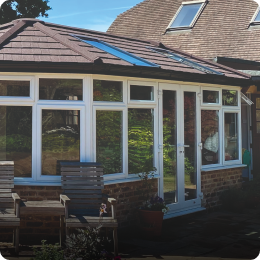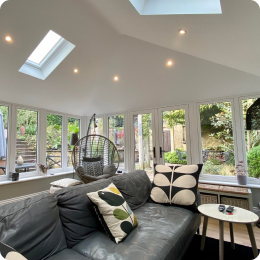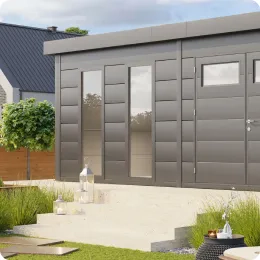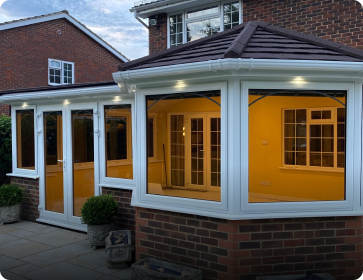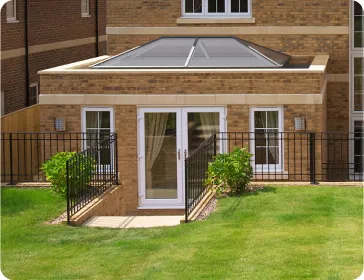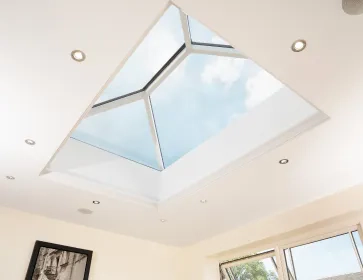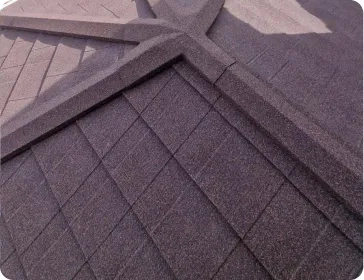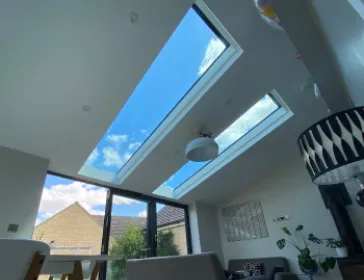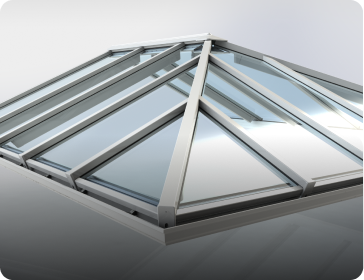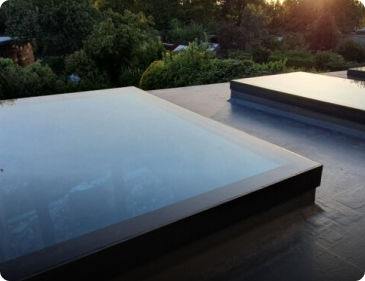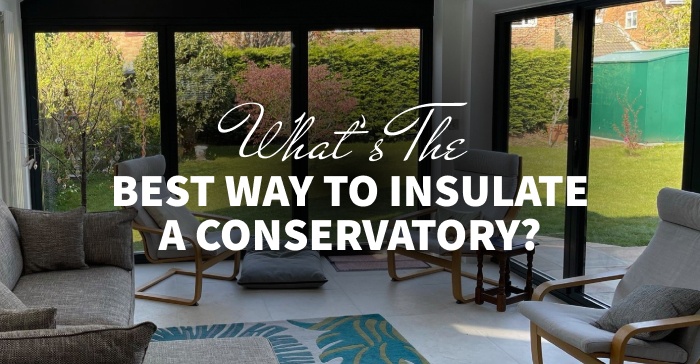
Conservatories make a beautiful addition to the home, but homeowners often cannot enjoy them due to poor thermal efficiency. That means the conservatory is too cold in winter and too hot in summer. Even when you try to heat it, that heat goes out the window – literally.
The solution is to insulate your conservatory. Insulation keeps heat in during winter and out during summer. There are different types of conservatory insulation, including an insulated conservatory roof or thermal wadding. Different types of insulation have different levels of efficiency. We’ll take you through the options to insulate your conservatory below.
Why Do Conservatories Get Cold?
Conservatories are constructed from glass and polycarbonate, instead of bricks and mortar like the rest of your home. Glass and polycarbonate are both poor insulators, which struggle to retain heat. That means heat escapes quickly and cold air can enter, hence why your conservatory gets so cold in winter. Insulating your conservatory resolves this problem.
How to insulate a conservatory
When you’ve invested in a conservatory, you want to be able to use it for more than a few weeks every year. You need to insulate your conservatory to keep it at a comfortable temperature all year round.
1. Insulated conservatory roof
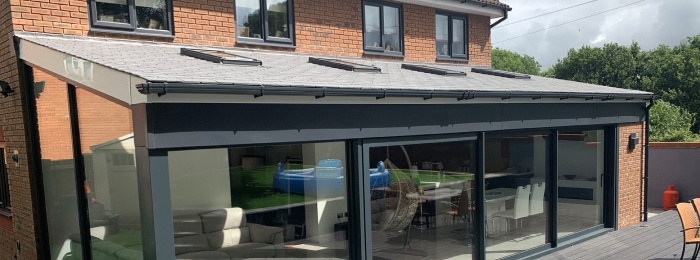
Heat rises, so the majority of heat is lost through the conservatory roof. The best way to insulate a conservatory is therefore to install an insulated conservatory roof. This means you can increase thermal efficiency without compromising on views through the windows.
SupaLite’s Tiled Conservatory Roof is the best insulated conservatory roof on the market. It has been developed using the latest technology and tested to rigorous industry standards, with an impressive u-Value of 0.15.
The SupaLite Tiled Conservatory Roof is constructed from lightweight aluminium frames, breathable membrane and 185mm of insulation. On the outside, it is finished with a choice of tiles or slates, available in a range of colours. Inside, it is complete with insulated plasterboard to create a smooth finish.
Installing an insulated conservatory roof transforms your conservatory into a space you can use all year round. If you are concerned about the loss of light, you can install the SkyVista glass panel or S1 Roof Lantern to maximise light without losing heat.
2. Aluminium foil and thermal wadding
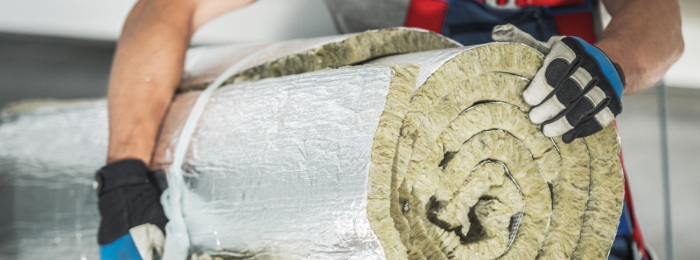
You can also attempt to insulate the conservatory using aluminium foil and thermal wadding. Instead of replacing the roof, you layer insulation underneath it. You can opt for plastic or plaster finishes to act as a ceiling. Plaster finishes can also be fit with lights, so you can use your conservatory at night.
Whilst aluminium foil and thermal wadding are effective in summer, they aren’t as effective in winter so you would need to combine with other methods to keep heat in. You can attempt this yourself, but we’d generally recommend hiring a professional to make sure it’s done properly.
3. Install blinds or roof drapes

If you want a budget-friendly way to insulate your conservatory, you could install thermal blinds and roof drapings. This is a good DIY option that doesn’t require hiring anyone. Whilst blinds are a good way to keep the heat out in summer, they are less effective at keeping heat in during winter.
Thermal blinds are aluminium lined and capture heat in pockets, creating a thermal barrier between the sun and your conservatory. However, they do compromise the view from your conservatory. Conservatory roof drapes work in a similar way, but are less obstructive.
It is worth considering whether blinds will provide enough insulation to make a difference to how you use the room. It is also worth considering whether you’re willing to compromise on view for slightly cooler summers.
4. Solar control film

If you want a cheap way to insulate your conservatory without compromising on that garden feel, you could install solar control film. This is a thin piece of material which you apply to the windows of your conservatory.
Solar control film basically limits the amount of sunlight that can enter your room. It absorbs and reradiates sunlight back out. In doing so, it helps to keep your conservatory cool in summer.
Unfortunately, solar control films don’t help keep your conservatory warm in winter. If you don’t get high quality films, you risk them peeling off within a year. They can also scratch or move on the window, ruining the visual appeal.
5. Upgrade your polycarbonate roof
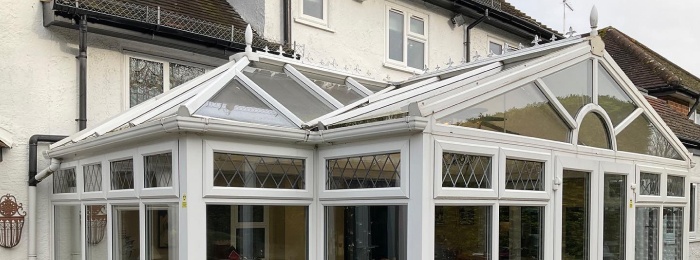
Another relatively cheap way to insulate your conservatory is to install a thicker polycarbonate roof. This will offer slightly better insulation than your existing polycarbonate roof. You could also slide another piece of polycarbonate roofing underneath the existing roof.
However, polycarbonate is still a poor insulator. That means whilst it will be slightly better, it will still get hot in summer and cold in winter. It also needs replacing every 10 years, so whilst polycarbonate may be cheaper, it is not the most cost effective.
How to heat your conservatory
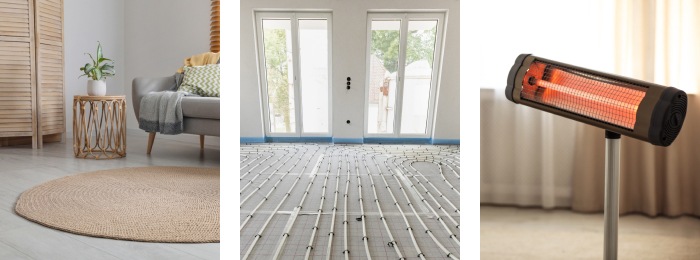
Once you’ve insulated your conservatory, you’ll want to know how to heat it. Here are a few tips:
1. Infrared heating
Most types of heating heat the air, like a radiator or plug-in heater. However, air escapes through glass panes, so you lose a lot of heat. Infrared heating, on the other hand, heats objects like sofas or people. That means heat is going where you can actually feel it.
2. Get a rug
Your feet are a major source of heat loss in your body, so standing on a cold wooden or tile floor will instantly make you feel cold. A rug acts as a thermal insulator between your feet and the floor. That means a thick rug works better than a thin rug.
Pay attention to the stitch count, size and material. Preferably, you want a rug with a high stitch count because that means it’s thicker. You also want it to cover as much of the floor as possible, so there are less cold bits to stand on. Wool offers the best insulation properties, but it can be hard to keep clean and maintain.
3. Underfloor heating
Underfloor heating is an efficient way of heating a conservatory because it provides a steady flow of heat from the ground upwards. As we know, heat rises, so it warms up the entire room.
However, underfloor heating can take a while to warm up and then cool down, so it cannot offer instant temperature control. It is also pretty expensive and requires tile or laminate flooring, so limits your flooring choices.
4. Draught excluders
Draught excluders don’t heat your conservatory per se, but they do stop heat from travelling around the home. That means it keeps the heat in your conservatory when you warm it up. This is a cheap solution to a simple problem.
SupaLite Can Help You Insulate Your Conservatory
The best way to insulate your conservatory is by installing a SupaLite Tiled Conservatory Roof. Our fully insulated conservatory roof has an outstanding U-Value of 0.15, which means almost no heat transference. So if you want to start using your conservatory all year round, request a quote today.

